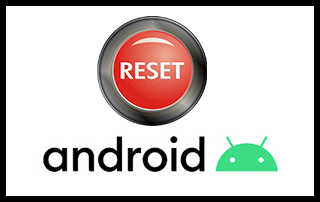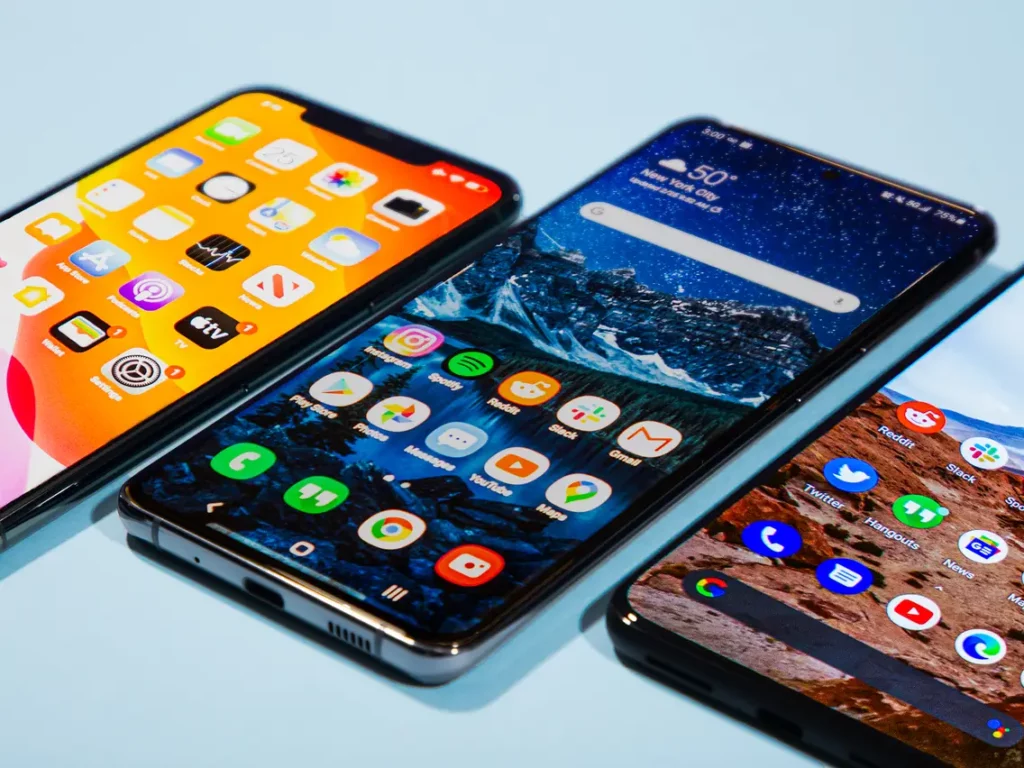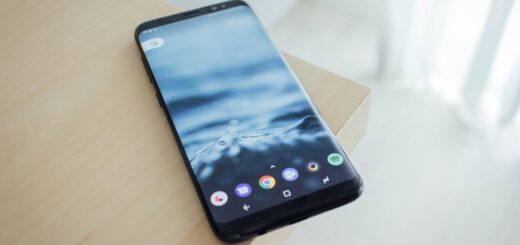How to properly delete everything from your Android phone
It seems like everyone is carrying around a phone that doubles as their primary camera, calendar, email, notepad, web browser, and, yes, even their music collection. It’s easy to get carried away with the number of apps and information we carry around with us—and it can get messy sometimes. Fortunately, there’s a way to clean up your phone and clear out all of that clutter: delete the unnecessary apps and information from your phone, which we’ll cover today.
It’s important to know how to clear your phone’s memory when it seems like it’s getting bogged down. If you are wondering how to delete everything from your phone, it’s important to perform a memory sweep first. Running a sweep regularly will ensure your Android device remains free from any unwanted applications and files. Follow these steps to perform a sweep and clear the memory of your Android device.
If you want to delete everything from your Android phone, you can delete everything, but be warned: it will delete everything. Everything. Yes, there’s no way to pick and choose what to delete. There are other methods to delete individual items or apps or files, but deleting everything will truly delete everything.
For the latest tips and tricks or to fix any issue with your android smartphone, click here.
Is a hard reset enough to delete everything from your Android phone?

A hard reset can be an essential tool when first setting up a new Android phone. But sometimes, you might realize that a hard reset isn’t enough. If you’ve got a dodgy app, an unwanted service, or you just want to get rid of old text messages, photos, or other files from an Android, you’ll need to perform a factory reset.
When you reach the end of the rope with your Android phone, there is one thing you need to do before you recycle it, sell it, or toss it in the trash: wipe it clean. But before you do that, take a hard look at your data. Even if you know you want to get rid of everything, you may still have a ton of texts, apps, photos, contacts, and videos that you don’t want or need. To get everything off your phone, it’s important to use a good and thorough factory reset, which wipes the phone clean of all of its data and resets it to factory settings.
If you’ve reached a point where you need a complete factory reset on your Android device, there’s a really easy way to do that. While we’re not recommending you do a factory reset on an unrooted device, if you’re desperate you can wipe everything from your Android phone with a hard reset.
A hard reset will remove everything from your phone’s operating system and data, so you won’t be able to reinstall apps or data. However, a hard reset won’t delete your Google account (since all of your data is synced to Google), which will make it easier (if you’re willing to wait) to redownload apps and data.
A factory reset is a drastic measure, but it can (and should) be taken from time to time. All modern Android devices have a factory reset option, so all you need to do is tap and hold the power button to get to it.
It’s often recommended that you perform this reset after a particularly nasty malware attack, or when the phone crashes or otherwise acts up. Is a hard reset enough to delete everything from your Android phone? In short, no. But that’s because factory resets only delete app settings and user data, not the actual files that make up your Android phone.
Data recovery programs on your Android phone?

Your Android phone can do a lot of great things—but there are some occasions when you need to recover data from that phone. Maybe you had to delete an important email by accident, or your phone got a virus that wiped everything off of it.
Or maybe it’s simple negligence—you accidentally deleted a picture of your kid’s birthday party your friends sent you, or your stupid dog chewed through the charger cord, and your phone’s data is already gone. Whatever the reason, you can recover deleted data from your Android phone.
If you have deleted a file from your Android device, you can still get it back. There are at least 3 ways to retrieve and retrieve lost data on Android: using a data recovery tool, using a photo recovery app, or using a third-party recovery app.
How a data recovery program works
Have you ever had a hard drive crash? If so, what happened? Well, there is a good chance that your files were accidentally deleted. This can be a real pain because you never know when you will need a file that you deleted.
But don’t worry the good news is that these things happen all the time and there are ways to retrieve those deleted files. So, how do you go about recovering those files? Well, data recovery programs are designed to recover your deleted files, because these files are not lost forever.
The Android system copies files in the root directory to external storage. This is typically done in case a file needs to be reinstalled. However, if the device is missing or destroyed, then the files are lost. The files are also lost if you format your phone or flash a ROM. One good thing about Android is that you can easily restore lost files using the Android backup and restore tool.
Data recovery is the process by which a file (or files) that has been deleted from a computer, is recovered by the computer’s operating system. The file(s) are restored from storage so they can be displayed. Recovered files can then be deleted or overwritten, with new data, as appropriate. The computer’s operating system often has one or more data recovery software components or utilities, which are usually accessed through the computer’s control panel.
So it is unlikely… but possible
Most smartphone users understand they need backups in case they lose their Android device, but what happens after they accidentally delete everything? It’s happened to most of us at some point, and thankfully it’s not impossible to recover. There are a few different ways to do this depending on your current operating system, but Android has one of the best features of all when it comes to photo recovery: Android’s built-in Photo Recovery.
Before you throw out your phone, there are some things you should do. First, make sure you back up your photos, contacts, apps, and text messages to iCloud or an external hard drive, and then clean your phone completely. You should also scan for malware and delete any viruses. After that, start deleting your apps, and delete any unused apps. Finally, make sure you delete your personal information like photos, contacts, and texts.
Encrypt your data on an android device

Android is an open-source operating system for smartphones. It allows users access to a rich ecosystem of apps, games, music, and movies. Android is more popular than iOS and is the most widely used mobile operating system in the world. But do you know how to encrypt your data on your Android device, or do you know how to do it at all?
Smartphones are significantly more popular with the younger generation than any other generation. With increased usage comes an increased risk of smartphone theft, and with that comes an increased risk of losing your data to thieves. Smartphone encryption apps can help you prevent the loss of your data to hackers, but the choice is very varied.
In 2017, Google announced that all devices running Android 7 or newer would receive the encryption feature by default. This means that users will have control over the security of their information, instead of trusting app developers and manufacturers to keep their data safe. Of course, this feature can be turned off at any time, but you may want to turn it on today.
Some points to notice before encrypting your data
- Data Encryption is a One-Way Street: Encryption: An encrypted file or message can only be read by someone who has the decryption key. Encryption is the process of encoding a message or information in such a way that only those with an authorized key to decode it can read the contents. Encryption is used in every field. Encrypted data is used whenever confidential and private matters are communicated on the Internet.
Data encryption is the process of converting readable information to cipher text so that it can be safely transmitted. This is an important process in the digital age when hackers and thieves often take advantage of unsecured systems and information. But encryption is, to quote the cliché, a one-way street. Encryption is something that goes on completely in the background while you are using the internet. This makes it invisible to you, but it certainly doesn’t mean that hackers can’t steal your information. In fact, in many ways encryption is making it even easier for hackers to steal your information. - Performance Speed after Encrypting your data: Encryption is the act of encoding data so that it is only readable by authorized parties. The encryption process adds an extra layer to the file or file so that only authorized parties can access the file. Both Windows and Mac have encryption software built-in; for the Mac it’s FileVault and for Windows it’s BitLocker. FileVault encrypts the entire drive, while BitLocker encrypts individual files and folders. Other encryption programs include DMGEncryptor and TrueCrypt.
- Backup your data first before Encrypting your android device: A lot of people are distraught from losing all of their data when their phone gets broken or stolen. It happens, and most of the time is out of our control. It’s important to back up your data and files before encrypting your phone, so if the worst happens, you’re still able to recover your files. While it’s true that encryption removes anyone from being able to view your data, it also helps to prevent anyone else from taking your phone. With the latest Android 8.0 Oreo update, there are even more ways to secure your device when using it, and encrypting is one of them.
Are you an Android user? If yes, then it is good news for you that Google has made backing up and encrypting your android device very easy. Backup and encrypting are the two main steps required to keep your data secure. Unfortunately, most Android users don’t back up their data hence losing important data. So, first, back up your data. Then, encrypt all your android apps - Encrypt your android device with a fully charged battery: There are several reasons why you might opt to encrypt your Android device with a fully charged battery. Perhaps you want privacy, perhaps you want to prevent your device from being stolen, or maybe you want to create a fully protected bootable MicroSD card from your Android device. Whatever the reason, encrypting your Android device with a fully charged battery is doable, and with the caveat that you’ll need a fully charged battery.
Encrypting your android device with a fully charged battery is easy (just make sure you follow all the steps) and can increase the security of your device. It will also increase battery performance since the encryption process uses up battery. If you don’t want to encrypt your android device, you can ignore this step.
How to Encrypt your Android device?

Few people know that their Android smartphones are capable of more than just making calls and sending text messages. Many android phones and tablets come loaded with encryption software by default, which can completely hide your sensitive data from prying eyes.
To do so, all you need to know is that encrypting your Android device allows you to hide files, photos, videos, and any other type of information you want so that people cannot see the data. Encrypting your Android device is pretty easy. Here’s how to encrypt your Android device.
Encrypting your Android device is one of the best things that you can do to protect your personal information. Encryption is a simple process; most Android devices come preinstalled with encryption software built-in, so all you need to do is install and enable it. Once installed, encryption software will automatically encrypt any files that you store in your app drawer or on the external storage.
Encrypting your Android device is a good idea, even if you don’t have a privacy or identity theft concern. With one of the many free encryption apps available, you can free up lots of storage space on your device, make your data unreadable to anyone but yourself, and hide personal information such as contacts, call logs, text messages, photos, and videos. Plus, the software is simple to use and doesn’t require much technical knowledge.
Encryption is one of the best ways to secure your devices and information. When you encrypt your Android device, your files, photos, text messages, contacts, call history, and app data will be protected from anyone who might have physical access to your device. But encryption can be pretty complicated, so here are some basic tips for protecting your Android device.
- Encrypt your Android device.
- Password Protect Your Files
- Use Passwords
- Use Encrypted USB Drives
- Then use WiFi Encryption
- Enable Encrypt Device
- Select to encrypt phone
- Enter your USB Key
- Decrypt phone
- Wipe device
Overwrite the previous information
Cleaning up your Android phone might seem like a chore, but it’s a necessity if you want to free up space and keep your phone running smoothly. And deleting things from your phone doesn’t have to be complicated. To help you out, we’ve put together a guide that shows exactly how to delete everything from your Android phone, including apps, media, and notifications.
Deleted files, photos, videos, and other important content on your phone are gone for good unless you’ve got a backup. But one day, you may need to permanently delete everything from your phone, including everything on your phone’s internal storage. Deleting everything isn’t something you want to do often. But if you’ve bought an expensive phone or it contains personal data, such as banking information, you need to know how to properly delete everything.
Android’s way of doing things is a bit different, compared to iOS, in that apps can have their folder structure. So, for example, Facebook has its folder in your main app drawer, where all your other apps live. Unlike iOS, where apps are installed into individual folders within the main app drawer, Android natively handles all files and app data in a single folder within the app drawer, making it easy to delete everything from an app, rather than deleting the app itself.
Every smartphone comes with a limited amount of storage space. To free up more space on your phone, you’ll need to get rid of the junk that you no longer need. But first, keep in mind that you can’t delete apps from your phone, only their content.
Use an Application to delete everything from your Android phone

Now and then, we need to wipe our Android phones completely of all the junk. Now, most of us would probably like to know how to delete all text messages or photos on an Android phone, but it’s a little more complicated than that. To remove your data from your device, you will need to use an application. Fortunately, there are quite a few such applications. Some of them require root access to work, while others do not. To be safe, just stick to a proper Android data remover application, like the one you can find in the Play Store.
Android has a ton of built-in security settings that let you protect your device from prying eyes and thieves. But, you can also download apps from the Google Play Store that will ask you to enter your password, wipe all your data and settings, and even make your phone unusable. These apps are called factory reset apps and can come in especially useful if the phone has died, been stolen, or you’ve made a mistake and wiped all your data by accident.
Other Methods to permanently erase everything from an Android device

Android erasing apps, or wiping, are handy tools when you want to wipe your phone clean of any information. In certain situations, these are the only tools that will work, because your phone’s built-in factory reset function doesn’t wipe all the data on your phone.
There are very many ways we can get our android device stuck and the right action to take differs based on the type of problem you are facing. If you want to reset your android device, so that it comes back to its default factory settings, you can follow a few steps.
For years, the factory reset option has been the only factory reset feature available to Android device owners. Many users, however, wish to learn other options to erase the contents of their device. Fortunately, there are some other options to factory reset your device, and they could be great tools for erasing evidence if you forgot to erase some of your private photos. But there are other methods too by which you can permanently delete everything from your mobile phone.
Hard reset your Android device
When your Android phone starts acting up, sometimes a reset can fix everything. But what happens when that button doesn’t respond? Sometimes, the answer may be a hard reset, or factory reset, which resets all settings and apps to default. If your phone still acts up, a factory reset might fix it, but only after following a few important rules. Learn how to hard reset your Android phone in this tutorial.
If you are one of the many Android users out there who have run into a brick wall, and can’t figure out how to get past it, then a hard reset may be just what you need. A hard reset is a factory reset that wipes out all the data on your Android phone and essentially resets it to factory settings.
Before proceeding, consider backing up all the data on your phone via cloud-based services like Dropbox or Google Drive, or purchase a hard drive or a USB thumb drive to keep the data safe. Once the backup is done, press and hold the Volume Up, Down, and Power buttons simultaneously for at least 10 seconds when the Samsung Galaxy S10 turns on. When the phone resets, wait at least 30 seconds and then power it back on. Once the phone boots up, either connect to a WiFi network or type in “Settings” and “About Device” to see if your phone is stuck.
Encrypt your Android device and then reset
The best way to secure your Android device is to encrypt it, and then reset it to factory settings. Doing so will delete your data, which is a good idea if you have sensitive information on your device. Encrypting your device only requires that you set up a password for when your device boots, but leaving your device unlocked can be risky.
Mobile security is a big concern for smartphone and tablet users. In March, Google unveiled a new security feature for Android devices called Project Treble. The feature, which will be released with Android Oreo (8.0), will allow users to encrypt their devices and then reset them outside of the United States.
Reset and override the Android device
Sometimes, a device just needs to be reset or overridden. Maybe something went wrong, like an accidental reset, or you just bought a new phone and you want to make sure all the settings are the way you like them. In these cases, you can do a quick reset or override of the device.
Use an app on your Android device to delete everything
Top-of-the-line Android smartphones come with some kind of built-in Password and Encryption Saving Manager, which enables you to store your passwords and other sensitive information locally on your device so that that information can’t be stolen by hackers. However, it can be very hard to remember all your passwords and PINs, and it could be easy to lose or forget your Android device, too. To secure your Android smartphone, you can employ an app called Android Device Manager, which enables you to remotely delete everything on your device.
Ever wanted a way to delete everything stored on your Android device? Maybe you’re upgrading your phone or you have a computer problem and need to delete all your contacts from a phone or tablet. This might sound like a difficult task, but it’s very simple. With the Google Play Store, you can find an app called “Cleanup”. This app can delete everything on your phone or tablet in just a few clicks.
Thank you for reading
Before you sell or give away your phone, it’s always a good idea to erase its data. Although most Android phones come with a factory wipe feature, this doesn’t erase everything, and you can’t be sure that your data is 100% gone. Luckily, there are ways for you to remove all the documents, videos, pictures, and other information from your phone.
There are times when we decide to clean up our phones. Maybe we’ve taken too many photos or downloaded a bunch of apps we don’t use anymore. Whatever the reason, we’re ready to say goodbye to everything. But how do we clean everything up? By going through your apps and deleting those you don’t want or just removing them from your device. You can delete apps by using the app’s own “Remove All” option, or by going to the App Drawer and swiping up on the app.
In a perfect world, we could store every photo, video, document, and app we ever needed on just a single phone, but there are limits to physical devices. We’re constantly running out of space, and even when we already have plenty of room, we might want to delete something to free up space or make room for newer content.



